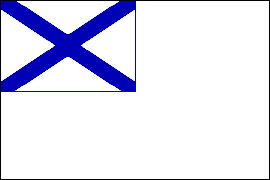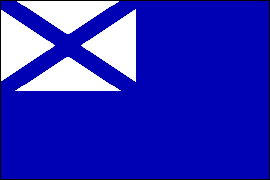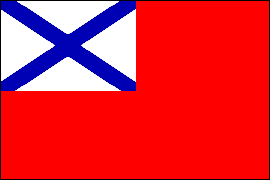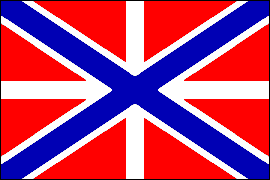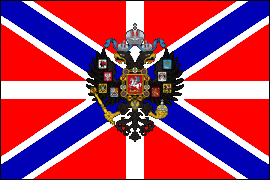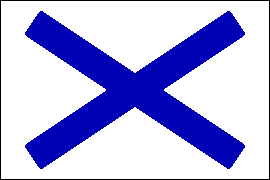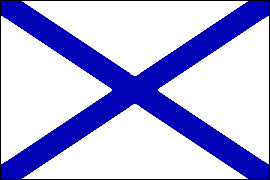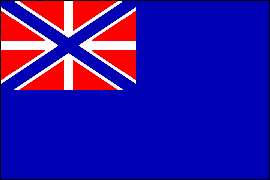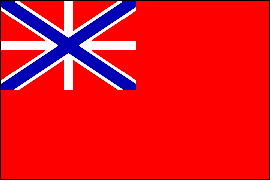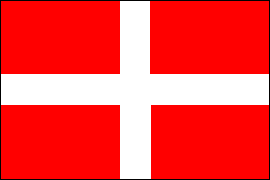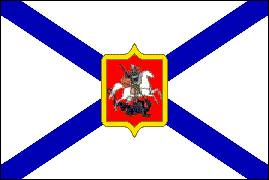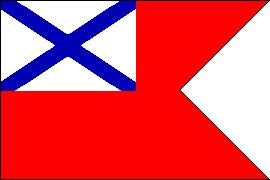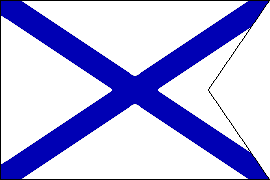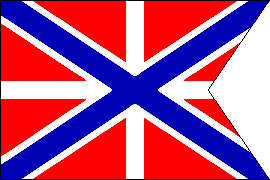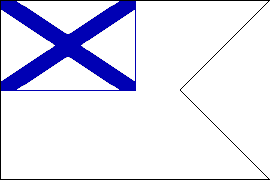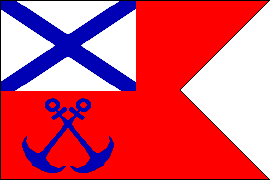In 1732 a decree of the Empress Anna abolished the squadron
ensigns, specifying that all warships of the Russian Navy should
fly the Andrew Flag, the jack and the white masthead pennant. In
1743, however, a decree of the Empress Elizabeth reinstated the
squadron ensigns and pennants. Then, in 1764, the squadron
ensigns were once more abolished, this time by a decree of the
Empress Catherine II, leaving the Andrew Flag, the jack and the
white pennant as Russia's sole naval flags. Squadron ensigns
were reintroduced in the reign of the Emperor Paul I and in
1797, he ordered that the blue and red ensigns be altered to
display the jack rather than the Andrew Flag as a canton. (The
jack was also the rank flag of the General Admiral of the
Navy—at that time the Emperor himself.) The Baltic Fleet was now organized
in three divisions, each of three squadrons. To
indicate squadron identity within each division, ships flew
either the white, the blue or the red masthead pennant. Thus
ships of the First Division flew the Andrew Flag, the jack and
either the white (1st Squadron), blue (2nd Squadron) or red (3rd
Squadron) pennant. During his reign, Russian warships also
sometimes flew the flag of the Knights of Malta—a red flag with
a white cross—as a jack. (The Emperor held the title of Grand
Master of the Order of the Knights of Malta.) After Paul's death
in 1801 his successor, Alexander I, reinstated the former blue
and red ensigns with the Andrew Flag canton. With some
variations, the squadron ensigns continued in use with both the
Baltic and Black Sea fleets until they were officially abolished
in 1865. Thereafter, the Andrew Flag was Russia's sole naval
ensign.
|
